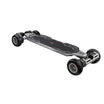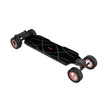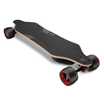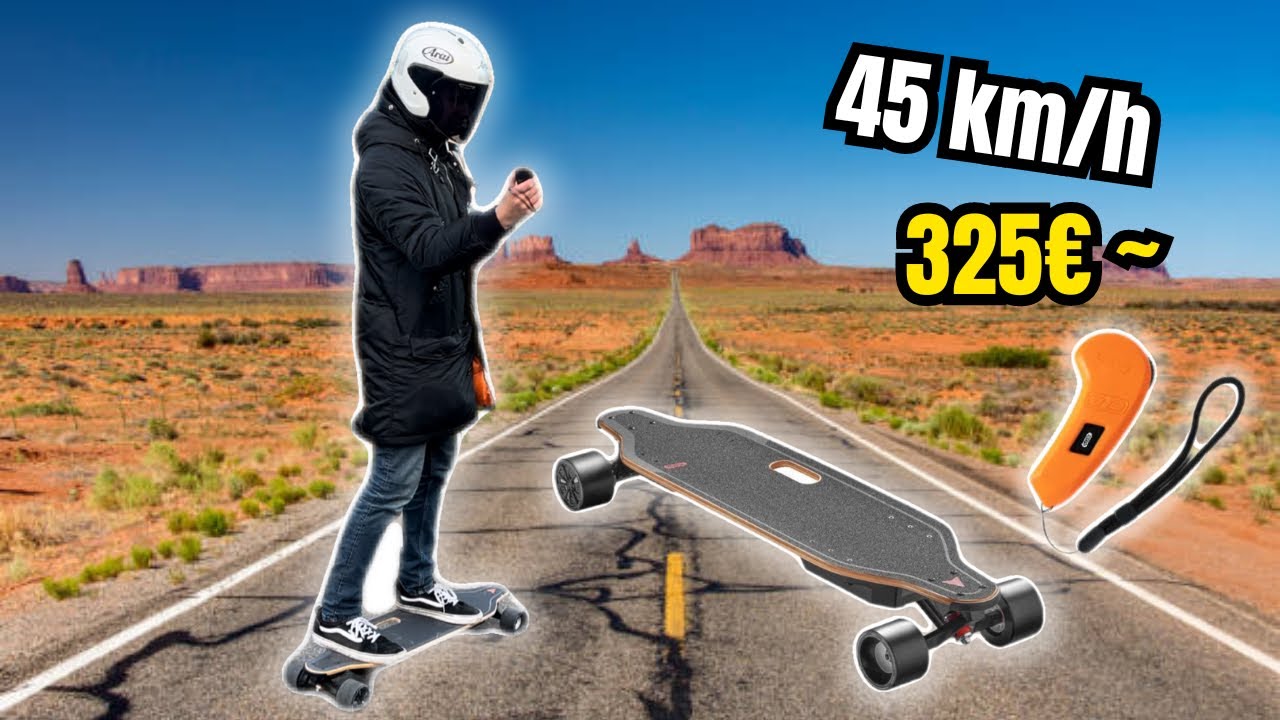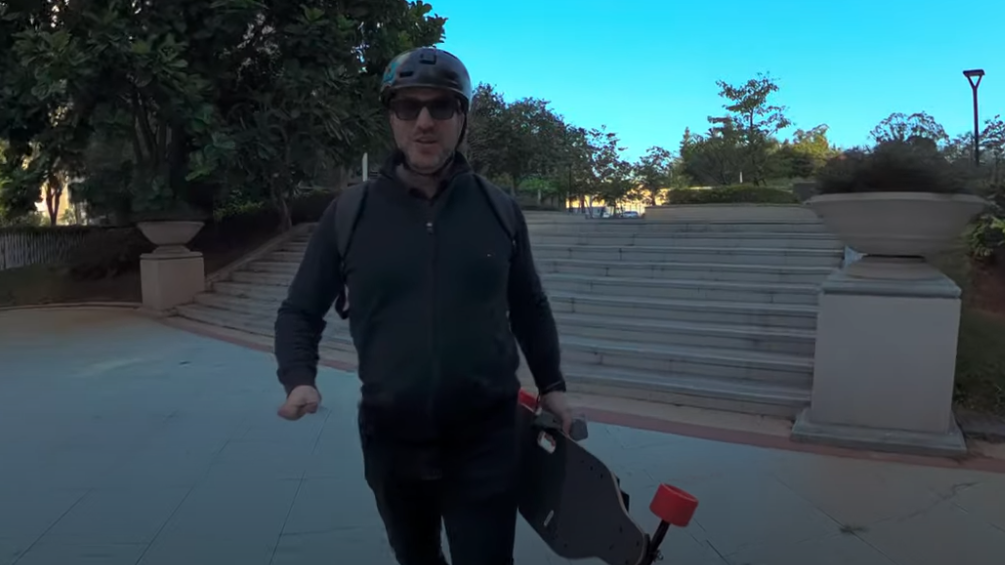Making your own electric skateboard could be an exciting and rewarding project. The drivetrain, which turns electrical energy into motion, is one of the most important parts of this build. This guide will show you the important parts, things to think about, and steps you need to take to make an electric skateboard drivetrain that works well and is effective.
What Components Are Essential for Your Electric Skateboard Drivetrain?
You'll need to get a few important parts before you start building your electric skateboard's drivetrain. Each part matters to make sure your board works well and quickly.

1. Motor
The motor is the powerhouse of your electric skateboard. It determines how fast and efficiently your board can travel. There are various types of motors to choose from:
| Motor Type | Power Output (W) | KV Rating (RPM/Volt) | Torque | Speed | Ideal Use Cases |
| Brushless DC Motor | 500W - 3000W | 80 - 200 KV | High (Lower KV provides more torque) | High (Higher KV provides more speed) | High-performance builds, off-road, and hill climbing |
| Hub Motor | 250W - 1500W | 60 - 120 KV | Moderate | Moderate | Urban commuting, compact and lightweight builds |
When choosing a motor, you should look at its power output and KV number (RPM per volt). A higher KV rating gives you more speed but less torque, while a lower KV rating gives you more torque to help you climb hills.
| KV Rating (RPM/Volt) | Speed (RPM at 36V) | Torque (Relative Scale) | Ideal Use Case |
| 60 | 2160 | 5.0 | Steep hill climbing, heavy loads |
| 80 | 2880 | 4.0 | Balanced torque and speed |
| 100 | 3600 | 3.0 | Moderate speed with decent torque |
| 120 | 4320 | 2.0 | Higher speed, less torque |
| 150 | 5400 | 1.5 | High speed, light loads |
| 200 | 7200 | 1.0 | Maximum speed, minimal torque |
2. Electronic Speed Controller (ESC)
The ESC acts as the brain of your skateboard, controlling the motor's speed based on input from the throttle. For best results, it's important to choose an ESC that works with your bike. Look for features such as:
- Current Rating. Make sure it can handle the motor's current draw.
- Programmability. Some ESCs let you change the settings for speeding up and slowing down, which enhances your riding experience.
3. Battery
The battery gives your motor and ESC the power they need. When picking out a battery, think about:
- Voltage: Higher voltage lets you go faster, but you need compatible components.
- Capacity (Ah): A higher capacity makes the ride last longer, but it also adds weight.
Common configurations include 10S (36V) or 12S (44.4V) setups using lithium-ion cells. They come with a good balance between weight and performance.

4. Pulleys and Belts
Pulleys connect the motor to the wheels through a belt system, allowing for torque adjustment and speed control. What you'll need:
- A motor pulley that is attached to the motor shaft.
- A wheel pulley on one of the wheels.
- The belt connects both pulleys; make sure it fits snugly but not too tightly.
5. Mounting Hardware
To securely connect all of your parts to your skateboard deck, you need the right mounting hardware. This includes both motor mounts and truck clamps. Motor mounts are fixed to the trucks and hold the motor in place. Truck clamps keep the motor mount firmly attached to the trucks.
How Do You Assemble Your Electric Skateboard Drivetrain?
Once you have all your components ready, it's time to assemble your drivetrain. Follow these steps for a successful build:
Step 1: Prepare Your Deck
Start with a sturdy deck that has enough space to accommodate all components. Longboards are often preferred due to their stability and roominess.
Step 2: Install the Trucks
Attach your trucks to the deck using appropriate hardware, ensuring they are securely fastened to avoid any wobbling during rides.
Step 3: Mount the Motor
- Attach the motor mount to the trucks using bolts.
- Securely fasten the motor onto the mount, ensuring it aligns with the wheel pulley.
Step 4: Install Pulleys and Belt
- Attach the motor pulley to the motor shaft.
- Mount the wheel pulley onto one of the wheels.
- Place the belt over both pulleys, ensuring it has proper tension—tight enough not to slip but loose enough not to strain.
Step 5: Connect Electronics
- Position your ESC within an enclosure on your deck.
- Connect wires from the battery to the ESC and from the ESC to the motor.
- Ensure all connections are secure and insulated to prevent shorts.

Common Mistakes to Avoid When Building Your Electric Skateboard Drivetrain
It can be fun to build an electric skateboard, but you need to pay close attention to the little things to make sure the build goes well.
Ignore Compatibility
This means making sure that voltage and current ratings match across all components. Not having the right parts together can cause your skateboard to fail or even get damaged. Always check the details twice before you buy something to avoid making mistakes that cost a lot.
Overtighten Components
Overtightening can cause more harm than help. If you tighten screws or bolts too much, the threads could get damaged, or the plastic plates could crack.
Neglect Safety Features
Fuse or circuit breakers are good safety features that you should include in your design. These parts help keep your electrical system safe from overloads, which can stop fires and other problems.
How Do You Maintain Your Electric Skateboard Drivetrain?
After building the drivetrain for your electric skateboard, it needs to be serviced regularly to make sure it lasts and works well:
- Periodically inspect wiring and connections for wear or loosening over time.
- Inspect for signs of wear on belts and ensure pulleys are aligned correctly.
- Clean components in routine to keep dust and debris away from motors and electronics; this helps prevent overheating.
- Monitor battery health, such as regularly check battery voltage levels and charge cycles to ensure optimal performance.
Build Your Electric Skateboard Drivetrain for Peak Performance
If you know what each part does and how to put it together correctly, you can make a system work well and improve your e-skateboarding experience as a whole. It's important to remember that regular care and fixes are key to keeping your board in great shape.














